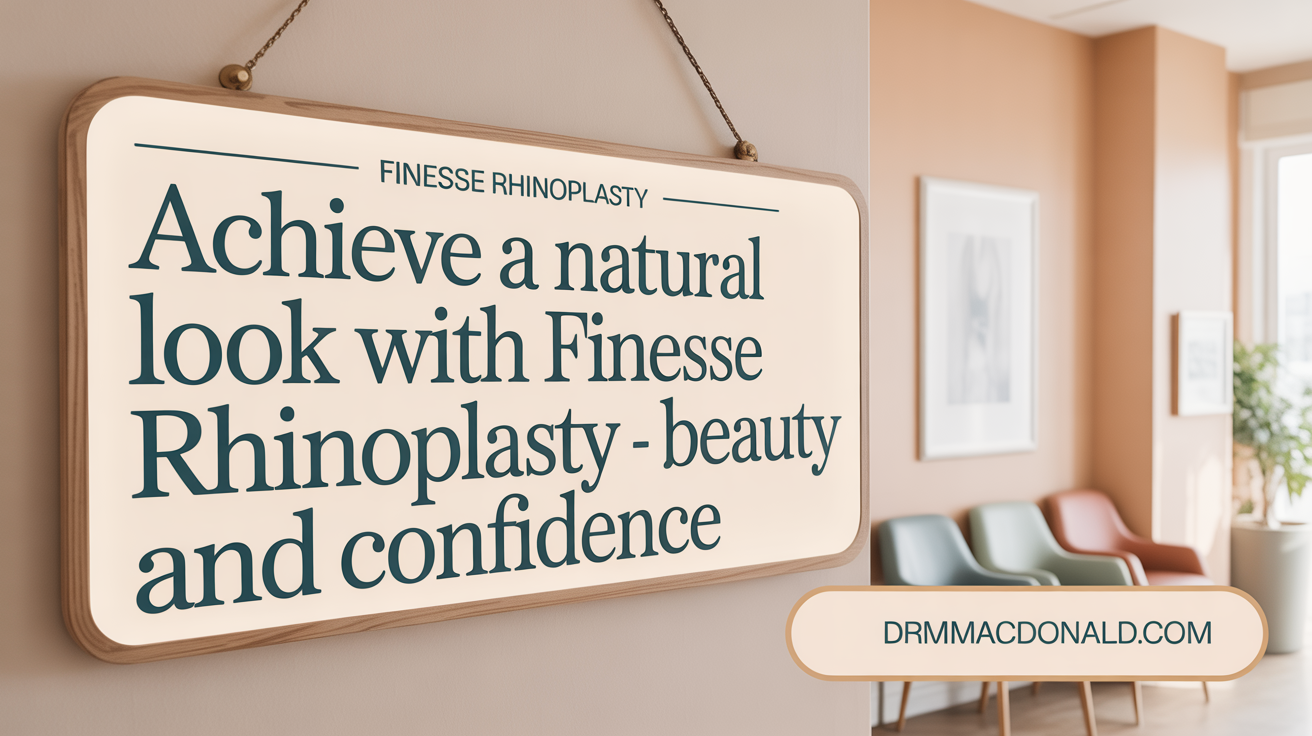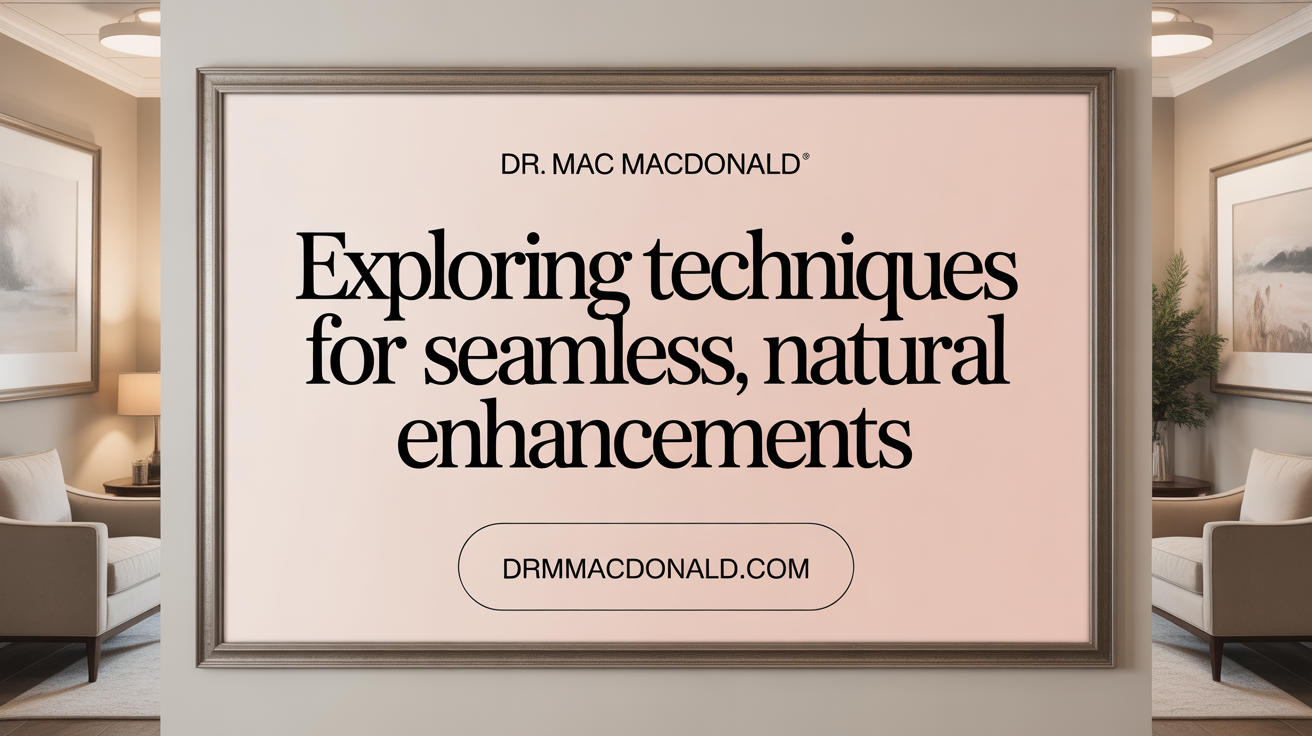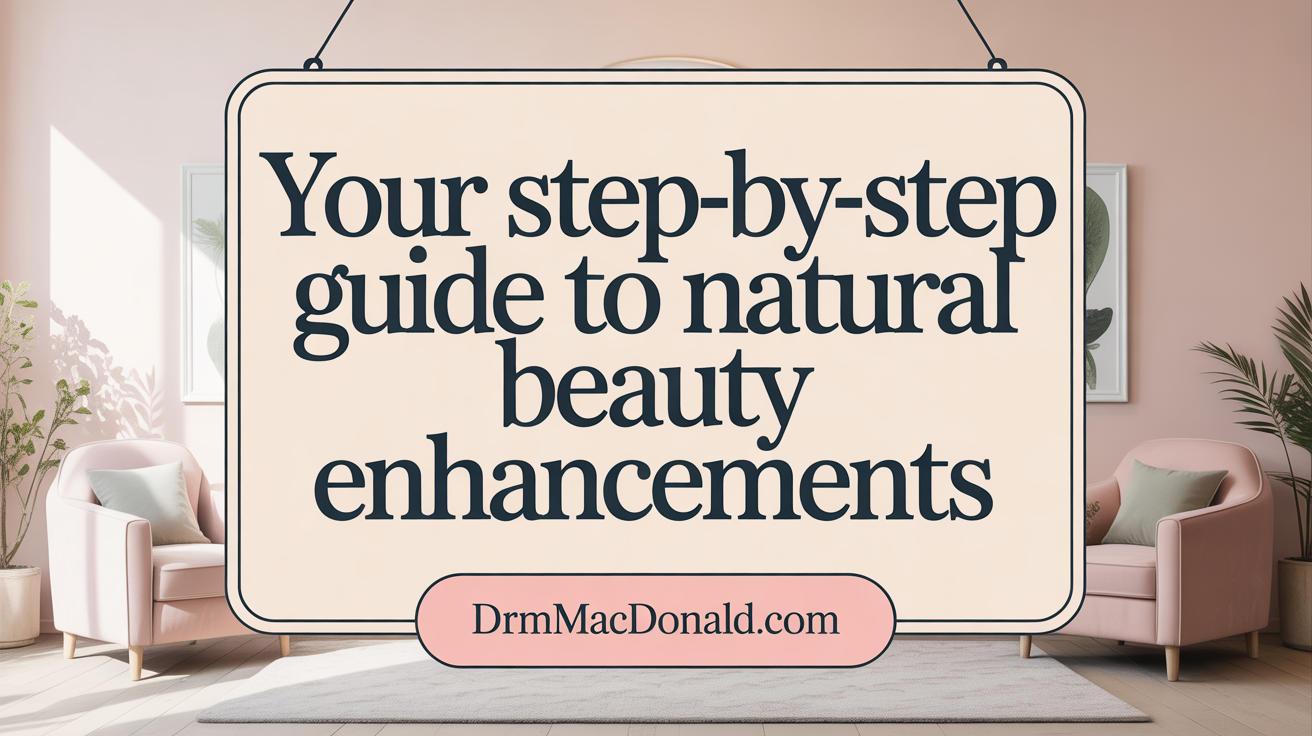The Essence of Natural-Looking Nose Jobs
Natural-looking nose jobs have emerged as a refined approach to rhinoplasty, emphasizing subtle modifications that enhance the nose’s harmony with the face rather than drastic alterations. Increasingly, patients seek results that preserve individuality and facial identity while improving both aesthetics and function. This article explores the innovative techniques, principles, and considerations that define natural rhinoplasty, guiding readers through the journey of achieving beautifully subtle nasal enhancements.
Understanding Natural Rhinoplasty and Finesse Techniques

What is the goal of a natural-looking nose job?
A natural rhinoplasty aims to subtly improve the shape and proportions of the nose to complement a person’s facial features. Unlike dramatic changes, it focuses on making small, precise adjustments that enhance facial harmony without creating an obviously operated appearance. The goal is for the nose to look like it belongs naturally to the face, giving the individual a refreshed, balanced look that respects their unique facial structure.
This approach involves contemplating the nose’s relation to other facial features such as eye distance, cheekbones, and chin size. Surgeons tailor their techniques to match these proportions, ensuring outcomes that are harmonious and authentic. Patients often seek these subtle modifications to boost confidence while preserving their original natural beauty.
How does finesse rhinoplasty provide subtle but effective results?
Finesse rhinoplasty is a specialized technique focused on making gentle, exact changes that enhance the nose’s appearance without evident signs of surgical alteration. It involves detailed reconstruction methods, including cartilage reshaping, suturing, and sometimes grafting to refine features such as the nasal tip, bridge, or nostrils.
Performed usually under general anesthesia, the procedure emphasizes conservativeness. Surgeons prioritize minimal trauma, often working through internal incisions to keep visible scars at bay. The objective is to create a seamless look where improvements are noticeable only because the face looks more balanced and refined.
This technique is especially effective for patients who desire a subtle change—such as reducing a bulbous tip, refining a droopy nose, or correcting slight asymmetries—while maintaining their natural facial identity.
What strategies do surgeons use to ensure harmonious results?
Achieving harmonious, natural results depends heavily on a surgeon’s expertise and their understanding of nasal anatomy. Experienced surgeons perform thorough preoperative assessments, considering the entire facial structure and individual proportions.
Use of advanced tools like digital imaging and 3D simulation helps patients visualize expected results, setting realistic expectations. During surgery, surgeons use refined techniques such as preservation rhinoplasty, which maintains the nose’s natural contours, or closed rhinoplasty, which minimizes visible scars.
Surgeons also focus on customizing procedures to the patient's specific needs, often employing millimeter adjustments rather than drastic cuts. Such careful planning and execution ensure that the nose blends seamlessly with other facial features—creating results that feel and look natural.
Additional insights on subtle nasal enhancements
| Technique Type | Description | Benefits | Suitable For |
|---|---|---|---|
| Preservation Rhinoplasty | Reshapes internal structures while preserving the dorsal bridge | Less swelling, faster recovery, natural contours | Patients seeking authentic look with minimal trauma |
| Finesse Rhinoplasty | Precise, delicate adjustments of nasal shape | Subtle aesthetic improvements, minimal visible signs | Patients desiring gentle enhancement |
| Non-surgical (Fillers) | Injectable corrections for minor tweak | Immediate results, reversibility | Those looking for temporary changes |
| Digital Imaging | Preoperative planning tool | Sets realistic expectations, personalized results | All rhinoplasty candidates |
Choosing an experienced, board-certified surgeon who uses these refined techniques is vital to ensure outcomes that look natural, balanced, and truly harmonious for each individual.
Techniques and Methods for Achieving Subtle, Natural Results

What are the different rhinoplasty techniques, such as traditional, preservation, and customized methods?
Rhinoplasty techniques vary widely, each suited to specific goals and patient needs. Traditional rhinoplasty involves significant reshaping of the nasal bones and cartilage. Surgeons often remove or reconstruct tissue to correct deformities, address functional issues, or significantly alter the nose's appearance. This method provides extensive correction but may involve longer recovery and noticeable changes.
In contrast, preservation rhinoplasty emphasizes maintaining the nose’s natural structures, especially the dorsal nasal bridge and supporting ligaments. Surgeons carefully reshape and reposition existing tissues rather than removing large portions, leading to more natural results. This approach usually results in less swelling, a faster recovery, and a more authentic look suited for patients seeking subtle aesthetic improvements.
Customized rhinoplasty combines elements of both approaches. Surgeons analyze each patient’s unique facial features and goals, often utilizing advanced imaging techniques. A tailored plan might involve preservation techniques for minor enhancements while employing traditional methods for more complex corrections. Advanced options like reconstructive rhinoplasty utilize tissue engineering and 3D imaging to address complex deformities or restore nasal function.
What approaches are used in closed rhinoplasty and septorhinoplasty?
Closed rhinoplasty involves making incisions inside the nose, leaving no visible scars. This technique is ideal for minor adjustments, tip refinement, and subtle corrections. It typically offers a quicker recovery and preserves the natural nasal anatomy more effectively.
Septorhinoplasty combines cosmetic rhinoplasty with septoplasty to correct breathing issues caused by a deviated septum. This approach can be performed through either open or closed techniques but is often minimally invasive. It aims to improve both nasal appearance and function, making breathing easier while maintaining a natural, harmonious shape.
What modern advancements, such as piezoelectric surgery, 3D imaging, and VR planning, are changing rhinoplasty?
Innovations in rhinoplasty are enhancing both surgical precision and patient experience. Piezoelectric surgery uses ultrasonic vibrations to cut bone and cartilage, resulting in less tissue trauma, bleeding, and postoperative swelling. This technique speeds up recovery, minimizes discomfort, and provides greater control during reshaping.
3D imaging plays a crucial role in planning and visualization. Surgeons can create detailed digital models of the patient’s nose, allowing for precise surgical planning and enabling patients to see potential outcomes via simulators. This technology helps set realistic expectations and tailors the procedure to individual facial harmony.
Virtual reality (VR) further advances preoperative visualization. By immersing patients in a simulated version of the expected results, VR enhances communication between patient and surgeon. It allows for better decision-making and personalized adjustments before surgery, ensuring higher satisfaction with the final natural, refined look.
Step-by-Step Procedure and Aesthetic Principles for Subtle Enhancements

How is a natural-looking nose surgery typically performed step-by-step to ensure subtle results?
A natural-looking nose surgery, or rhinoplasty, begins with administering anesthesia to ensure patient comfort. The surgeon then chooses the approach: either a closed technique, involving incisions inside the nostrils, or an open technique, which adds a small incision across the columella (the tissue between the nostrils). This access allows the surgeon to carefully lift the skin and examine the underlying cartilage and bone.
Reshaping the nose involves meticulously removing excess cartilage or bone and, when necessary, adding cartilage grafts from the septum, ear, or rib to support the structure. The focus is on making small, refined adjustments rather than dramatic overhauls, to maintain the nose’s natural contours.
Once the reshaping is complete, the skin is gently redraped over the new structure. Incisions are then closed with fine sutures, often positioned inside the nose to avoid visible scars. Support devices like splints and gauze are applied to stabilize the nose during initial healing.
This step-by-step process emphasizes precision, structural support, and a gentle touch to ensure the final appearance is harmonious and subtle. Post-operative care includes wearing splints and avoiding trauma, helping the nose settle into its refined, natural-looking shape over time.
Recovery Expectations and Candidate Suitability for Natural Rhinoplasty

What does the recovery process entail after a natural-looking rhinoplasty, and what are the typical post-surgery expectations?
Recovery after a natural rhinoplasty involves several stages, with initial swelling and bruising being the most noticeable within the first 72 hours. These symptoms gradually decrease over the following weeks, and most patients see a significant reduction in swelling within 2 to 4 weeks. However, the full healing process can take up to a year, especially as residual swelling around areas like the nasal tip gradually subsides, revealing the refined shape.
Patients are usually advised to keep their heads elevated to reduce swelling. Strenuous activities, contact sports, and heavy lifting should be avoided for at least 4 to 6 weeks to prevent trauma to the nose. Protecting the nose from sun exposure is also recommended to prevent discoloration or damage.
Social and professional activities can typically resume within one to two weeks, although subtle changes and the final aesthetic results continue to evolve over several months. Following post-operative instructions carefully and attending scheduled follow-up appointments with the surgeon significantly enhance recovery outcomes and ensure long-term satisfaction.
Choosing the Right Surgeon and Minimizing Regret with Natural Rhinoplasty

What factors should be considered when selecting a qualified surgeon for natural and subtle nasal enhancements?
Selecting the right surgeon is crucial for achieving natural-looking nose results. First, prioritize board certification from reputable organizations like the American Board of Plastic Surgery or Otolaryngology, as this indicates extensive training and adherence to high safety standards. Experience matters: look for surgeons with a strong track record in rhinoplasty, especially those well-known for subtle, natural outcomes.
Review their portfolio of before-and-after photos and read patient testimonials to gauge their aesthetic judgment and technique. Ensure they operate in accredited facilities equipped with advanced technology, which enhances safety and precision. During consultations, assess their communication skills, understanding of your goals, and their approach to aesthetic refinement.
Surgeons’ professional memberships, awards, and participation in industry conferences can also serve as indicators of expertise and recognition in the field. Ultimately, combining technical skill with artistic ability and a patient-centered approach significantly improves the chances of a satisfying, natural result.
Achieving Subtle Beauty Through Expert Natural Rhinoplasty
Natural-looking nose jobs represent a sophisticated evolution in rhinoplasty, prioritizing subtlety, facial harmony, and preservation of the patient's unique features. Through advanced techniques like preservation and finesse rhinoplasty, skilled surgeons can deliver refined enhancements with minimal downtime and lasting satisfaction. Understanding the importance of thorough consultation, proper candidate selection, and recovery management empowers patients to achieve beautiful, natural results. By carefully choosing experienced board-certified surgeons who respect individual anatomy and aesthetic goals, patients can confidently embrace subtle nasal improvements that enhance their natural beauty, reinforcing confidence and facial balance.
References
- Subtle Nose Job: Enhance Your Natural Beauty with Precision
- Transform Your Look: Nose Job Just the Tip - Becker Rhinoplasty
- Preservation Rhinoplasty, the Natural-Looking Nose Job Everyone ...
- Subtle Rhinoplasty with Dr. Deepak Dugar: Enhancing Natural Beauty
- What Makes a Natural Nose Job? | Mr Paul Tulley | Rhinoplasty
- BLOG | Preservation Rhinoplasty: Embracing Natural Beauty
- The Latest Advances in Rhinoplasty Techniques and Technologies
- Rhinoplasty in Houston TX - Kristy Hamilton, MD, FACS
- Button Nose Rhinoplasty in Newport Beach | Dr. Ali Sajjadian
- Balanced Beauty: Rhinoplasty Solutions for Long-Nosed Women
